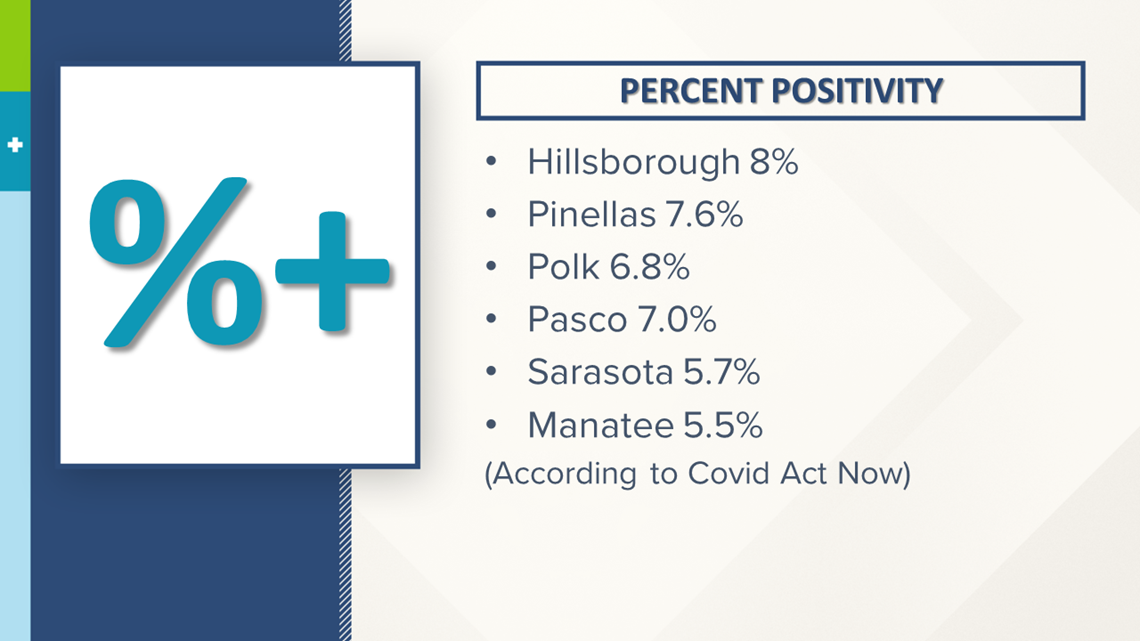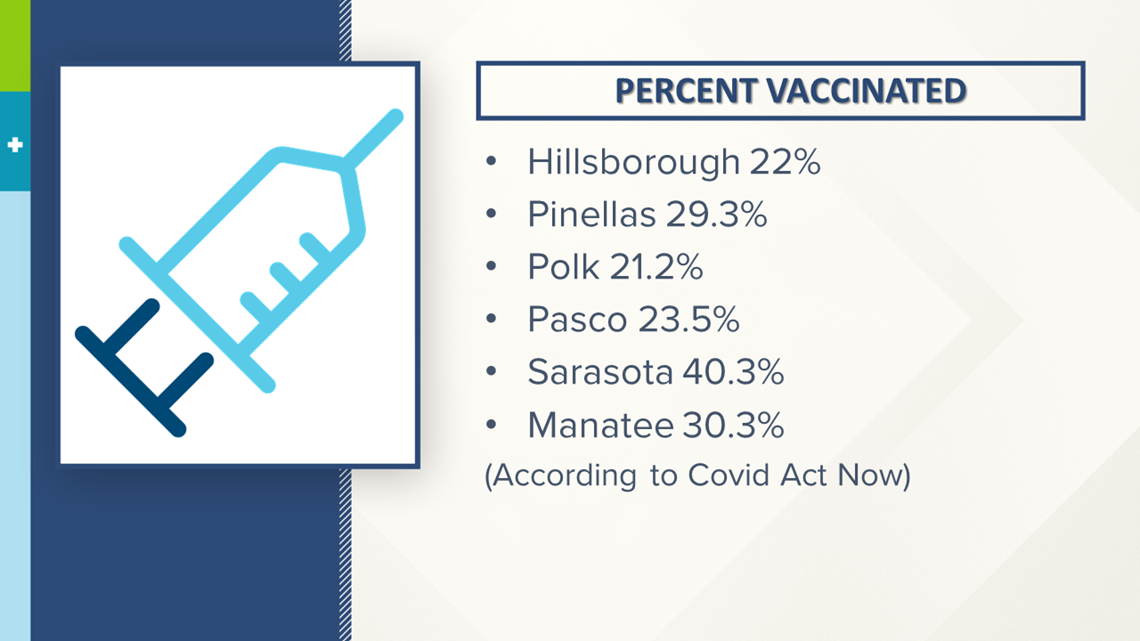TAMPA, Fla. — For more than a year we've been overloaded with new information about the novel coronavirus.
It's gotten so overwhelming, at times, mental health experts told us to disconnect and pull away from all of it to give yourself a mental break.
We're saturated with information so when you hear the latest advice from medical experts to keep up the mask wearing and social distancing for just a little longer, it can feel more daunting than ever.
We're going to break down where we're at in the Tampa Bay area and what the race to the coronavirus finish line really looks like for us.
It starts with our current battle between inoculation and transmission.
VACCINES VS. VARIANTS
"The virus, if we’re not careful, is really going to be able to take off and give us another big peak in the next four weeks or so," said Dr. Thomas Unnasch, a professor at the University of South Florida specializing in disease surveillance.
Unnasch has been tracking local data for the past year. He said cases across the Tampa Bay area along with the nation are sticking to tick upwards again.
"Unfortunately in the last week and a half or so, the reproductive rate in our area and in the nation and in Florida has gone above that 'one number' for the first time since the second week in January," said Unnasch.
The reproductive rate is the average rate at which someone with COVID-19 passes it on. For example, if 100 people with the coronavirus pass it to another 100 people, that gives you a reproductive rate of one.
According to Unnasch's calculations, our reproductive rate just recently started to climb back up to one after being less than that since the post-holiday spike.
For perspective, when COVID-19 cases were at their highest in Florida, our reproductive rate was about 1.22.
Dr. Aileen Marty, an Infectious Disease Specialist at Florida International University says we not only need to continue to take precautions to slow the spread of the B.1.1.7 variant, which is more transmissible than the original virus and now the dominant variant in Florida, but to prevent new variants from forming.
"If we halt transmission, we halt its ability to change, its ability to become a newer and worse variant," said Dr. Marty.
As of March 30, 2021, 10 Tampa Bay obtained key indicators in the race between variants and vaccines.
PERCENT POSITIVITY
All counties in the Tampa Bay area are seeing a percent positivity above the recommended 5 percent. Percent positivity is the percentage of positive tests out of all tests administered on any given day. The World Health Organization recommends the percent positive remain below 5 percent for at least two weeks before governments consider reopening.


MASK MANDATES
The medical experts are advising people, both vaccinated and unvaccinated to continue to wear face masks when in crowded or public settings. In Tampa Bay, three counties still have indoor face-covering requirements.


VACCINE PERCENTAGE
Scientists say our greatest defense against COVID-19 outside of face coverings and social distancing is the vaccine. Here's where our counties are when it comes to the percentage of people vaccinated out of the total population. Experts say it will take anywhere from 75% to 90% of people vaccinated before we reach herd immunity.
Right now in Florida, anyone 40-years-old and older is eligible to get the COVID-19 vaccine. All Floridians 16 and up become eligible on April 5.


WHO'S SPREADING THE VIRUS?
It's also important to understand who is still getting infected. Data from the Florida Department of Health gives us a glimpse into the new cases. They tend to be younger, unvaccinated people likely working and socializing around one another.
The hope is that as more people in this age category get vaccinated, the less the virus spreads and mutates.


- Doctors say vaccine passports make sense to limit spread of COVID-19
- 'It moved fast:' UK variant now causing most COVID-19 cases in Florida, doctor says
- Derek Chauvin trial: 4th teen eyewitness testifies about George Floyd's death at Derek Chauvin trial
- Elevated levels of red tide reported in southwest Florida
- Study finds high levels of carcinogen in some hand sanitizer brands
- Church transformed into luxury home up for sale in St. Petersburg
►Breaking news and weather alerts: Get the free 10 Tampa Bay app
►Stay In the Know! Sign up now for the Brightside Blend Newsletter

